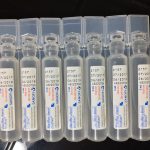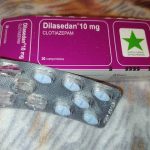Rapamycin: Uses, Benefits, Dosage, Side Effects, Food Sources, Interaction

What is Rapamycin?
Rapamycin, also known as sirolimus, belongs to a class of drugs called mTOR inhibitors. The mammalian target of rapamycin (mTOR) is a protein kinase that regulates various cellular processes, including growth, metabolism, and aging. By inhibiting mTOR, rapamycin influences cellular pathways associated with aging and age-related diseases.
Rapamycin was originally developed as an immunosuppressant drug, rapamycin has shown promising anti-aging properties in preclinical studies.
Numerous studies conducted on various organisms, including yeast, worms, flies, and mice, have demonstrated that rapamycin can extend lifespan and delay the onset of age-related diseases. In a study conducted on middle-aged mice, a three-month treatment with rapamycin showed promising results by increasing life expectancy by up to 60% and improving measures of health span. These findings have sparked considerable interest in rapamycin’s potential benefits as an anti-aging intervention.
The anti-aging effects of rapamycin are thought to be mediated through several mechanisms. One key pathway is the inhibition of the mTOR complex 1 (mTORC1), which leads to decreased protein synthesis, cell growth, and proliferation. This inhibition promotes cellular homeostasis and reduces the accumulation of damaged or dysfunctional proteins and organelles, a hallmark of aging.
Furthermore, rapamycin has been shown to improve cellular metabolism, increase autophagy (the cellular recycling process), enhance mitochondrial function, and modulate inflammation. These combined effects contribute to the overall anti-aging benefits observed in various organisms.
Rapamycin Dosage
Rapamycin is available in different formulations, including oral tablets and intravenous formulations. The choice of formulation depends on the specific medical condition being treated and the healthcare provider’s judgment.
The dosage of rapamycin can vary depending on the specific medical condition being treated. For its approved medical uses as an immunosuppressant following organ transplantation, the dosage typically ranges from 0.5 to 5 mg per day, although higher doses may be used initially. The dosage may be adjusted based on individual patient factors such as age, body weight, and response to treatment.
When it comes to rapamycin’s potential use as an anti-aging intervention, the optimal dosage has not been definitively established. Most preclinical studies investigating the anti-aging effects of rapamycin have used different dosages and regimens, making it challenging to determine the ideal dosage for humans.
In a few clinical trials exploring rapamycin’s effects on aging and age-related conditions, lower doses have been employed to minimize potential side effects. For example, doses ranging from 2.5 to 20 mg per week have been used in studies investigating rapamycin’s effects on immune function, cancer prevention, and age-related decline. These lower doses aim to strike a balance between potential benefits and minimizing the risk of adverse effects.
It is important to note that the use of rapamycin for anti-aging purposes is still largely experimental, and it is not recommended to self-administer rapamycin without proper medical supervision. The decision on dosage should be made by a healthcare professional who can assess an individual’s specific circumstances and closely monitor for potential side effects.
Rapamycin Side Effects
Rapamycin, like any medication, can have side effects. It is important to be aware of these potential side effects before considering its use. The side effects of rapamycin can vary depending on the dosage, duration of treatment, and individual factors. Here are some commonly reported side effects associated with rapamycin:
1. Immunosuppression: Rapamycin is primarily used as an immunosuppressant drug, and one of its main effects is to suppress the immune system. While this can be beneficial in preventing organ transplant rejection, it can also increase the risk of infections. Individuals taking rapamycin may be more susceptible to bacterial, viral, and fungal infections. It is important to closely monitor for signs of infection and seek medical attention if any symptoms arise.
2. Delayed wound healing: Rapamycin has been associated with delayed wound healing, which can be a concern, particularly in individuals who may require surgical interventions or have existing wounds. This effect on wound healing is related to rapamycin’s impact on cell growth and tissue repair processes.
3. Metabolic disturbances: Long-term use of rapamycin may lead to metabolic disturbances, including hyperlipidemia (high levels of lipids in the blood) and insulin resistance. These effects can increase the risk of cardiovascular diseases and diabetes. Regular monitoring of blood lipid levels and glucose metabolism is essential in individuals taking rapamycin.
4. Gastrointestinal issues: Rapamycin can cause gastrointestinal side effects such as nausea, vomiting, diarrhea, and abdominal pain. These symptoms are generally mild and can often be managed with supportive measures or adjustments to the dosage.
5. Oral ulcers: Some individuals may experience the development of oral ulcers while taking rapamycin. These ulcers can be painful and may require appropriate management.
6. Dermatological effects: Skin-related side effects, including rash, acne-like lesions, and dry skin, have been reported in some individuals taking rapamycin. These effects are usually mild and resolve with continued use or appropriate interventions.
It is important to note that the side effects of rapamycin can vary from person to person, and not everyone will experience them. The severity and frequency of side effects may also depend on the specific medical condition being treated and the dosage used.
If you are considering rapamycin for anti-aging purposes, it is crucial to consult with a healthcare professional who can evaluate your individual circumstances, discuss potential side effects, and closely monitor your health throughout the treatment. They can provide guidance on the benefits and risks associated with rapamycin use and help make an informed decision.
Drug Interactions
Rapamycin can interact with other medications, which may affect its effectiveness or increase the risk of side effects. It is important to inform your healthcare provider about all the medications, supplements, and herbal products you are taking before starting rapamycin. Here are some notable drug interactions associated with rapamycin:
1. Strong CYP3A4 inhibitors: Rapamycin is metabolized by the enzyme CYP3A4 in the liver. Concurrent use of strong CYP3A4 inhibitors can increase the blood levels of rapamycin, potentially leading to an increased risk of side effects. Examples of strong CYP3A4 inhibitors include certain antifungal medications (e.g., ketoconazole, itraconazole), macrolide antibiotics (e.g., erythromycin, clarithromycin), and protease inhibitors used in HIV treatment (e.g., ritonavir).
2. Strong CYP3A4 inducers: Conversely, strong CYP3A4 inducers can decrease the blood levels of rapamycin, reducing its effectiveness. These inducers enhance the activity of the enzyme responsible for rapamycin metabolism. Examples of strong CYP3A4 inducers include rifampin, carbamazepine, phenytoin, and St. John’s wort.
3. Other immunosuppressant medications: Concurrent use of rapamycin with other immunosuppressant drugs, such as cyclosporine or tacrolimus, may increase the risk of immunosuppression and its associated complications. The combined use of multiple immunosuppressants requires careful monitoring and adjustment of dosages to maintain the appropriate balance between therapeutic effect and risk.
4. Vaccines: Rapamycin may reduce the effectiveness of certain vaccines, particularly live vaccines. Live vaccines contain weakened forms of viruses or bacteria, and rapamycin’s immunosuppressive effects can potentially interfere with the body’s immune response to the vaccine. It is important to discuss vaccination schedules and considerations with your healthcare provider when taking rapamycin.
5. Grapefruit and grapefruit juice: Grapefruit and grapefruit juice can inhibit the activity of CYP3A4 enzymes, potentially increasing the blood levels of rapamycin. It is advisable to avoid grapefruit or grapefruit juice while taking rapamycin.
6. Other medications: Various other medications, including certain antibiotics, antifungals, antivirals, anticonvulsants, calcium channel blockers, and statins, may interact with rapamycin. These interactions can affect the blood levels of rapamycin or the other medications, potentially leading to adverse effects or reduced efficacy. It is important to consult with your healthcare provider to assess and manage any potential drug interactions.
It is crucial to note that this is not an exhaustive list of drug interactions, and other medications may also interact with rapamycin. Always consult with your healthcare provider or pharmacist to ensure the safe and effective use of rapamycin and to minimize the risk of drug interactions. They can provide personalized advice based on your specific medications and medical history.
How to Get a Prescription for Rapamycin
To obtain a prescription for rapamycin, you should follow these general steps:
1. Consult with a healthcare professional: Start by scheduling an appointment with a healthcare professional who has knowledge and experience with rapamycin. This can be a primary care physician, a specialist in anti-aging medicine, or a physician who specializes in the specific condition you are seeking treatment for. During the appointment, discuss your interest in rapamycin, its potential benefits, and any concerns or questions you may have.
2. Provide your medical history: Be prepared to provide a detailed medical history, including any current medical conditions, previous treatments, and medications you are currently taking. It is important to disclose any allergies, previous surgeries, and relevant laboratory results.
3. Discuss your goals and expectations: Clearly communicate your reasons for considering rapamycin and your expectations for its use. This will help your healthcare professional determine if rapamycin is an appropriate option for you and to discuss potential risks and benefits.
4. Informed decision-making: Your healthcare professional should provide you with detailed information about rapamycin, including its potential benefits, side effects, and any limitations or uncertainties regarding its use for your specific condition or goals. This will allow you to make an informed decision about whether to proceed with rapamycin treatment.
5. Monitoring and follow-up: If your healthcare professional determines that rapamycin is suitable for you, they will likely establish a monitoring plan to assess your response to the medication and to monitor for potential side effects. Regular check-ups and laboratory tests may be necessary to ensure your safety and optimize the treatment.
It is important to note that the prescription and use of rapamycin for anti-aging purposes is still an off-label use, meaning it is not specifically approved by regulatory authorities for this purpose. As a result, not all healthcare professionals may be familiar with or comfortable prescribing rapamycin for anti-aging purposes. Finding a healthcare professional who is knowledgeable and experienced in this area can increase the likelihood of obtaining a prescription.
Remember, self-administering rapamycin without proper medical supervision is strongly discouraged. Only use rapamycin under the guidance and supervision of a qualified healthcare professional who can evaluate your individual circumstances, assess the potential benefits and risks, and closely monitor your health throughout the treatment.
Are Rapamycin Supplements Real?
No, Rapamycin is a prescription drug and not available as an over-the-counter supplement. However, there are certain supplements that are marketed as rapamycin mimetics or rapamycin-like compounds. These supplements claim to have similar effects on the mTOR pathway, which rapamycin targets. It’s important to note that these supplements are not actual rapamycin and their safety and efficacy are not well established.
Where to Buy Rapamycin
Rapamycin is a prescription medication and is not available for purchase over the counter or without a valid prescription. It is primarily used as an immunosuppressant for preventing organ transplant rejection. As such, it is only available through licensed pharmacies and healthcare providers.
To obtain rapamycin, you will need to consult with a healthcare professional who can evaluate your medical condition, assess the potential benefits and risks, and provide a prescription if they determine it is appropriate. They will guide you on the dosage, duration of treatment, and monitoring required.
It is essential to follow legal and ethical practices when obtaining medications. Purchasing rapamycin from unauthorized sources or without a prescription is not recommended, as it can be illegal, unsafe, and potentially harmful. It is important to prioritize your health and well-being by seeking appropriate medical guidance and obtaining medications through legitimate channels.
If you are interested in exploring rapamycin for anti-aging purposes, it is advisable to consult with a healthcare professional who is knowledgeable about anti-aging medicine or longevity research. They can evaluate your specific circumstances, discuss potential benefits and risks, and guide you through the proper channels to obtain the medication if it is deemed appropriate for your situation.
What Foods Contain Rapamycin?
Rapamycin is is naturally produced by a soil bacterium called Streptomyces hygroscopicus. It is not naturally present in foods. Rapamycin was discovered and isolated from this bacterium in the 1970s, and it is primarily synthesized and produced for pharmaceutical purposes.
While rapamycin is not found in foods, there are certain dietary practices and compounds that have been associated with the modulation of the mTOR pathway, which rapamycin targets. Plant-based diets, which are lower in animal protein and higher in plant compounds, have been associated with reduced risk of age-related diseases and improved longevity, potentially through mTOR modulation.





